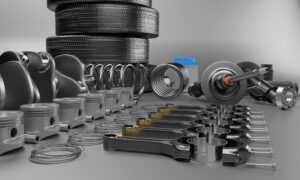In the automotive industry, technology has become a double-edged sword. On one hand, it has revolutionized the way vehicles are designed, manufactured, and operated, introducing a new era of convenience, efficiency, and safety. On the other hand, the increasing reliance on complex software and electronic components has opened the door to a new set of challenges, including a potential rise in the occurrence of faulty cars. This trend not only exacerbates the concerns of consumers but also brings into focus the critical role of lemon laws, which are evolving to accommodate the intricacies of modern vehicles and the nuances of technology-related defects. This exploration delves into how technology shortcuts can fuel an increase in faulty cars and how lemon laws are adapting to new technology, thereby changing the dynamics of lemon law buybacks.
Shortcuts
Technology shortcuts, often taken in the pursuit of innovation and market competitiveness, can inadvertently lead to an increase in vehicle malfunctions. Manufacturers, in their rush to integrate the latest advancements, may deploy untested or insufficiently tested software, electronic systems, or other technological components. These elements, while promising to enhance vehicle capabilities, can suffer from bugs, compatibility issues, or unforeseen operational failures. For instance, advanced driver-assistance systems (ADAS), which rely heavily on software algorithms and sensor technologies, can malfunction if the software is not thoroughly vetted or if the sensors are not accurately calibrated. Similarly, electric vehicle (EV) technologies, including battery management systems and electronic drivetrains, pose unique challenges that, if not adequately addressed, can lead to reliability issues. These technology shortcuts can manifest as persistent and unresolved problems for consumers, significantly impacting the usability and safety of their vehicles.
Lemon laws
The emergence of such technology-induced faults has necessitated an evolution in lemon laws, which traditionally focused on mechanical defects. Lemon laws are designed to protect consumers from defective new and, in some cases, used vehicles that fail to meet quality and performance standards despite repeated attempts at repair. As vehicles become more software-driven, lemon laws are adapting to ensure that technology-related defects are also covered under their provisions. This adaptation includes recognizing software glitches, electronic system failures, and other tech-related issues as valid grounds for a lemon law claim. However, proving a technology-related defect can be more challenging than demonstrating a mechanical failure, given the intangible nature of software and the complexity of diagnosing electronic issues.
Buybacks
The adaptation of lemon laws to encompass technology-related defects is altering the world of lemon law buybacks. A lemon law buyback refers to the process wherein a manufacturer is required to repurchase a defective vehicle from the consumer, providing a refund or a replacement. With the inclusion of technology-induced faults, manufacturers are compelled to pay closer attention to the software and electronic components of their vehicles, not just the mechanical parts. This shift necessitates a more thorough testing regime and a greater emphasis on quality control throughout the design and manufacturing process to mitigate the risk of defects that could lead to a buyback. Moreover, the process of assessing and validating technology-related claims has become more sophisticated, involving specialized diagnostic tools and expertise in software and electronics, further changing the dynamics of lemon law buybacks.
The evolving nature of lemon laws in response to technological advancements underscores the need for a proactive approach by manufacturers to minimize the occurrence of defects. This includes investing in robust testing and quality assurance processes, fostering a culture of continuous improvement, and being responsive to consumer feedback and issues. For consumers, the evolution of lemon laws offers a broader safety net, ensuring that their rights are protected in the face of increasingly complex vehicle technologies.
As the automotive industry continues to push the boundaries of technology, the rise in technology shortcuts poses a significant challenge, potentially fueling an increase in faulty cars. The adaptation of lemon laws to address technology-related defects is a critical development, changing processes around lemon law buybacks and ensuring consumer protection remains a priority. This ongoing evolution reflects the complex interplay between innovation, consumer rights, and the need for regulatory frameworks to adapt to changing technologies and ensure that the benefits of automotive advancements are realized without compromising vehicle reliability and safety.



































